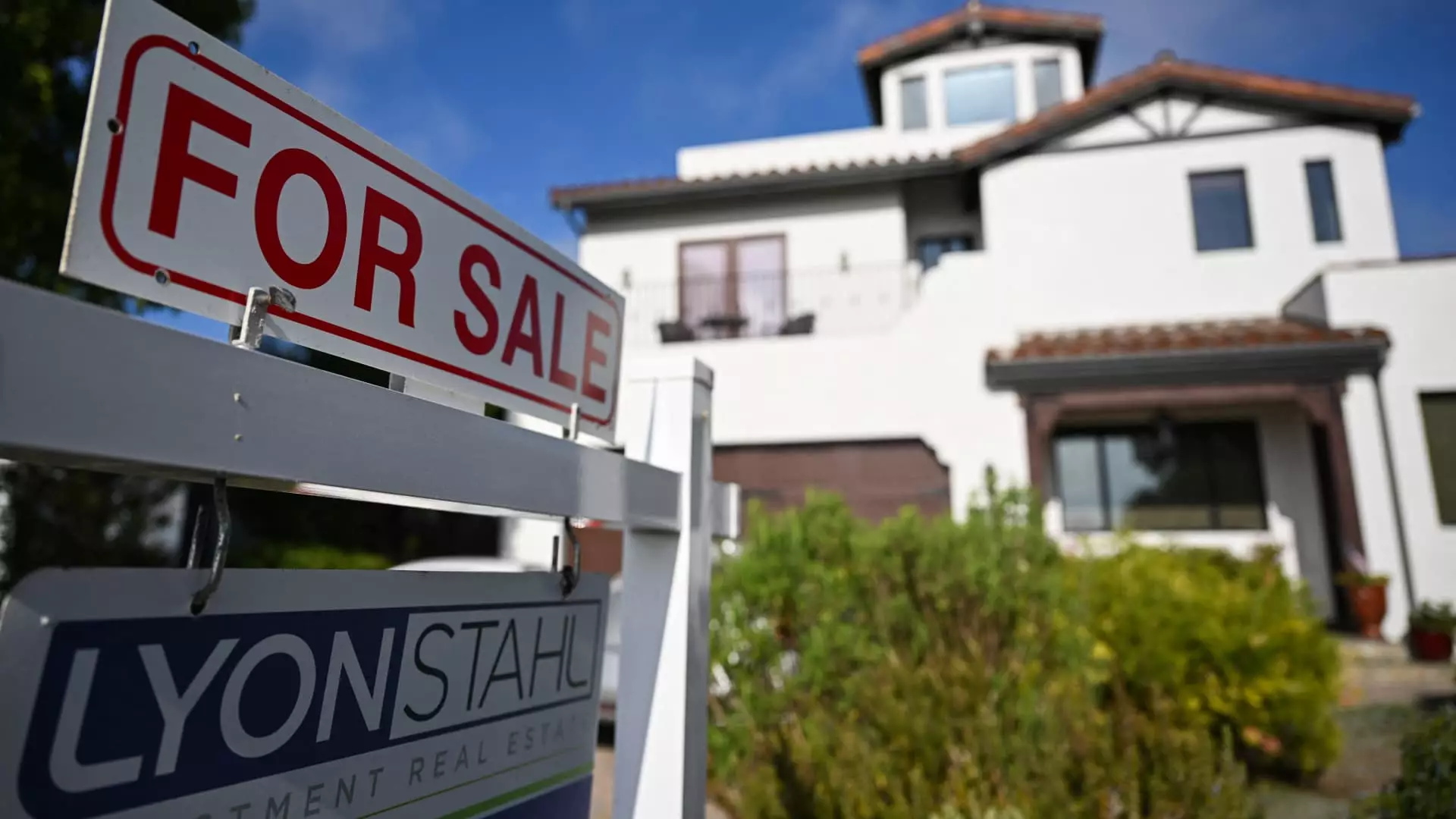In a dramatic twist, mortgage rates plummeted Thursday, dropping to 6.63% in response to the Trump administration’s latest tariff announcement. A decline of 12 basis points marks this as the most notable change since October, igniting mixed feelings across homebuyers and investors alike. The rippling effects of a steep sell-off in stock markets spurred a rush toward bonds, leading to a decline in bond yields — a key indicator closely linked with mortgage rates. This situation exemplifies how rapidly geopolitical changes can sway financial markets, leaving many to ponder the longer-term ramifications of policy decisions that could reshape the fabric of homeownership in America.
Matthew Graham, COO of Mortgage News Daily, captured the essence of this volatility, noting that markets are bracing for potential disruptions in global trade. While falling mortgage rates might seem like a silver lining in an otherwise cloudy economic forecast, the reality for potential homebuyers paints a much grimmer picture.
Spring Housing Market: A Dichotomy of Opportunity and Affordability Crisis
With the arrival of spring, traditionally a vibrant season for real estate, one might expect a flood of eager buyers hitting the market. However, this year presents a paradox. Even as mortgage rates are hovering at levels close to their lowest since December, affordability remains an insurmountable hurdle for many. Finding a home within a reasonable price range is growing increasingly elusive. In the four weeks ending March 30, the typical monthly mortgage payment skyrocketed to an eye-watering $2,802, leading many to question whether the dream of homeownership is slipping further out of reach. Given that nearly 70% of American households cannot afford even a $400,000 home, as projected by the National Association of Home Builders, the welcome drop in rates is almost rendered moot.
These developments prompt an urgent dialogue about economic disparity and fairness in housing. It is alarming to note that an estimated 52.87 million households cannot meet the minimum income threshold required to purchase even a modest $200,000 home, presenting a stark illustration of an economy where wealth is increasingly concentrated and the path to homeownership is fraught with barriers.
The Supply Conundrum: An Abundance of Homes, But Underwhelming Affordability
While there is a flicker of hope with a reported increase in housing supply, the reality is that this influx is mismatched with the needs of buyers at the lower end of the market. The chronic underbuilding that has beset the U.S. housing market since the Great Recession exacerbates the situation, as first-time homebuyers are confronted with choices that are frequently out of their financial reach. Matt Ferris, a Redfin agent in Northern Virginia, pointed out an uptick in sellers looking to capitalize on market conditions, yet many of these listings do not cater to the pressing demands of affordability.
The data shows a 10% annual increase in new listings and a staggering 28% rise in active listings. However, homes are lingering on the market longer, and an increase in price reductions suggests that many sellers are grappling with the reality of a less enthusiastic buyer base. This presents a troubling trend that could hinder market growth, particularly in regions like Jacksonville and Miami, where pending sales have tumbled by 15.1% and 13.7%, respectively.
A Shifting Landscape: The Buyers’ Dilemma Amid Economic Concerns
The dual pressures of high acquisition costs and lingering economic anxieties have created a market environment that is pushing buyers back. The current landscape compels potential homebuyers to assess whether it is worth entering the market. As Danielle Hale, chief economist for Realtor.com, noted, the ongoing economic concerns are stifling a robust response from potential buyers, leading to a rebalancing within the market.
This is not just a financial issue; it represents a broader socio-economic challenge that questions the viability of homeownership for middle-class Americans. Many families are left to wonder whether their hopes of buying a first home are becoming increasingly unrealistic in a market that seems favoring affluent buyers while sidelining the majority.
In essence, the convergence of declining mortgage rates and escalating costs paints a stark picture for the American dream of homeownership. While we cannot overlook the importance of the low-rate environment, the chasm between the financial realities of most buyers and the availability of affordable housing highlights an urgent need for a more equitable approach to address this crisis. The question remains: Can policymakers rise to the occasion to recalibrate the scales of opportunity in America’s housing market?

